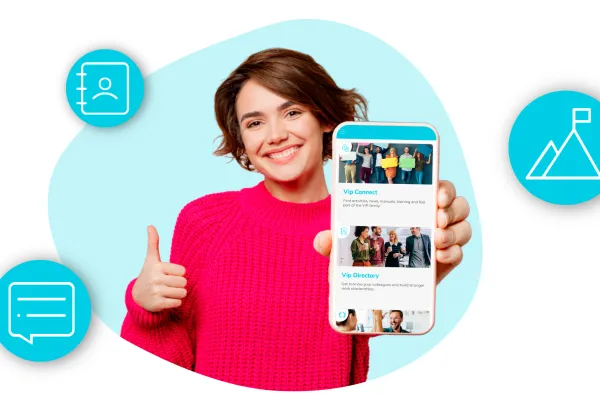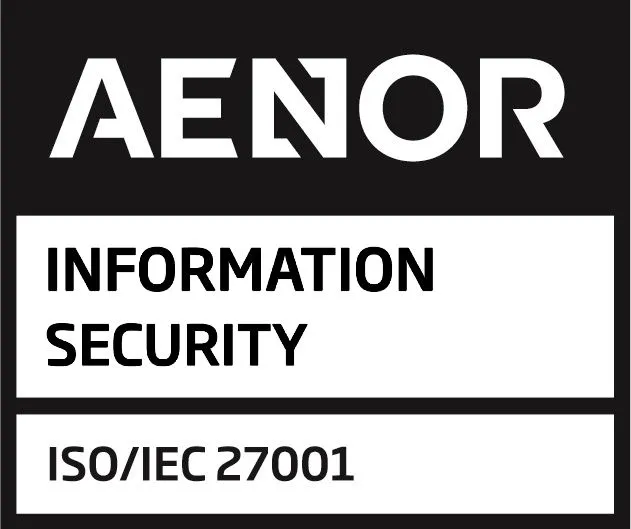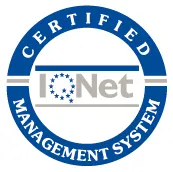
What makes a professional choose to stay at a company long-term? Beyond salary or perks, one of the most influential factors is having a clear path for growth. A well-defined career plan not only provides direction for professional development, but also shows that the company trusts its people and invests in their evolution.
Table of Contents
In today’s increasingly competitive job market, companies that promote internal growth not only retain talent, they also strengthen engagement, productivity, and culture. Designing an effective career plan is a strategic investment that directly impacts employee loyalty and the company’s competitive advantage. In this article, we’ll walk you through the step-by-step process of building one.
Effective career plan: key steps for implementation
Is your organization doing enough to retain key talent and ensure their growth within the company?
In a fast-paced and competitive labor market, having a solid career plan has become a key tool for managing talent and enhancing organizational competitiveness. More than just a document, a well-designed plan serves as a roadmap that guides employees’ professional growth, while also contributing to talent retention and sustainable business development.
Companies that commit to an effective career plan see increased job satisfaction and employee engagement. They also make better use of human resources and promote internal mobility. This fosters a positive work environment and better alignment between individual and company goals.
Designing a career plan helps identify development opportunities, required skills, and the competencies employees need to achieve their professional goals. This structured approach ensures the company has skilled professionals ready to take on new challenges and lead change.
What is a career plan and why does your company need one?
A career plan is a strategic tool that aligns people’s growth aspirations with the organization’s future needs. Beyond mapping out career paths, it helps anticipate business challenges, consolidate internal talent, and ensure promotions are based on key competency development.
Creating this type of roadmap means identifying critical roles, establishing progress paths, offering tailored training, and development programs for each profile. This helps prevent talent loss and strengthens merit-based internal promotion. What better way to show that your company believes in its people?
When growth is structured, teams gain clarity about their career prospects, which boosts engagement, improves work climate, and increases retention. Ultimately, a well-designed career plan has a positive impact on company culture and business performance.
Designing a tailored career plan
Once you’ve identified key competencies and current skill gaps, it’s time to design a career plan that really works. But where should you start to make it useful for both the company and the employee?
The first step is to set the strategic goals of the plan: retaining talent, boosting motivation, reducing turnover, or supporting internal transformation processes.
From there, structure the design in clear phases that make implementation easier and allow customization by area, department, or role:
- Define professional profiles and their related development paths.
- Identify training requirements for each career stage.
- Select or create internal or external training programs.
- Assign mentors, coaches, or reference leaders to support the process.
- Set up a system for regular monitoring and feedback.
Using the right tech tools can make a big difference. From HR software that maps out career paths to platforms that assess skills and automate follow-up, success depends on both content and execution. As highlighted by Harvard Business Review, the key is to create a realistic, scalable roadmap that delivers tangible value.
Developing a career plan is a strategic move that aligns business expectations with people’s aspirations, building commitment and a sense of belonging.

Common mistakes when implementing a career plan
While many companies aim to offer a solid career plan, they often fall short of turning that ambition into an effective policy. Recognizing common mistakes can prevent your plan from becoming just another unused document or losing credibility among teams.
One of the most frequent errors is designing generic plans that don’t connect with business strategy or employee expectations. This leads to disengagement and a lack of commitment.
Another pitfall is underestimating the role of leadership. If direct managers aren’t aligned or trained to support their teams, the plan loses effectiveness. Mid-level managers play a key role in activating development paths and ensuring consistent guidance.
Lack of communication and transparency is also a critical issue. When the rules aren’t clear or opportunities seem arbitrary, trust is broken, leading to the opposite of what the plan intended: talent drain.
According to Gallup’s State of the Global Workplace report, only 21% of employees worldwide feel engaged at work. One of the main reasons? A lack of clear and accessible development opportunities.
Avoiding these mistakes improves implementation and enhances your employer brand as a place where talent is nurtured and empowered.
Continuous monitoring and improvement
A career plan isn’t something to create and forget. To make a real impact, it requires structured monitoring, ongoing dialogue, and the flexibility to adapt over time.
So how do you keep the plan alive? The foundation lies in setting measurable indicators to track progress. Common metrics include:
- Participation in training programs
- Skills development
- Internal mobility
- Employee satisfaction with development opportunities
But numbers alone aren’t enough. It’s essential to build a culture of honest, ongoing feedback where employees can share their experiences and express what they need to grow.
Career paths must also be reviewed regularly. As business goals evolve, so do the roles and skillsets required. Adjusting development paths, offering new training, or resetting expectations are all part of a people-centered, proactive approach.
Digital tools can significantly streamline this process. Solutions like those from Vip District allow companies to personalize development paths, track satisfaction, and gain insights into what motivates their teams, helping HR make data-driven decisions and build stronger connections with employees.
In the end, what makes the difference is turning the career plan into a dynamic, collaborative experience that reflects the everyday reality of the workplace.
Key benefits for the company and the team
Investing in a professional career plan benefits employees, and delivers a clear return for the business. But how do you translate an internal development strategy into measurable business results?
By committing to employee growth, companies build long-term sustainability. Well-designed and well-managed career plans significantly improve talent retention, one of today’s biggest challenges.
A team that sees real growth opportunities is more likely to stay, reducing turnover costs.
The positive effects also extend to the work environment: increased engagement, higher motivation, and a stronger sense of belonging. All of this directly enhances productivity, collaboration, and innovation.
Key benefits of a well-implemented career plan include:
- Lower voluntary turnover and replacement costs
- Better work climate and employee experience
- Alignment between professional development and strategic goals
- Higher individual performance and productivity
- Identification and activation of internal talent for new challenges
- Stronger internal leadership through internal promotion
- Enhanced employer branding and talent attraction
Career plans, when developed with strategic vision, go far beyond being just an HR initiative. They are a direct lever for competitiveness. To get buy-in from senior leadership, you’ll need clear evidence: real-life success stories, performance metrics, and a vision tightly linked to business strategy.
Empowering talent through internal culture
A strong career plan reinforces the connection between business needs and people’s professional growth. When it becomes part of the company’s DNA, it drives retention, boosts performance, and positions the organization as a talent leader.
Building this kind of initiative takes commitment, technical know-how, and long-term vision. But the return is clear: more motivated employees, more efficient internal processes, and a stronger, more cohesive company culture.
New to Vip District? Contact us and find out what our platform has to offer!








